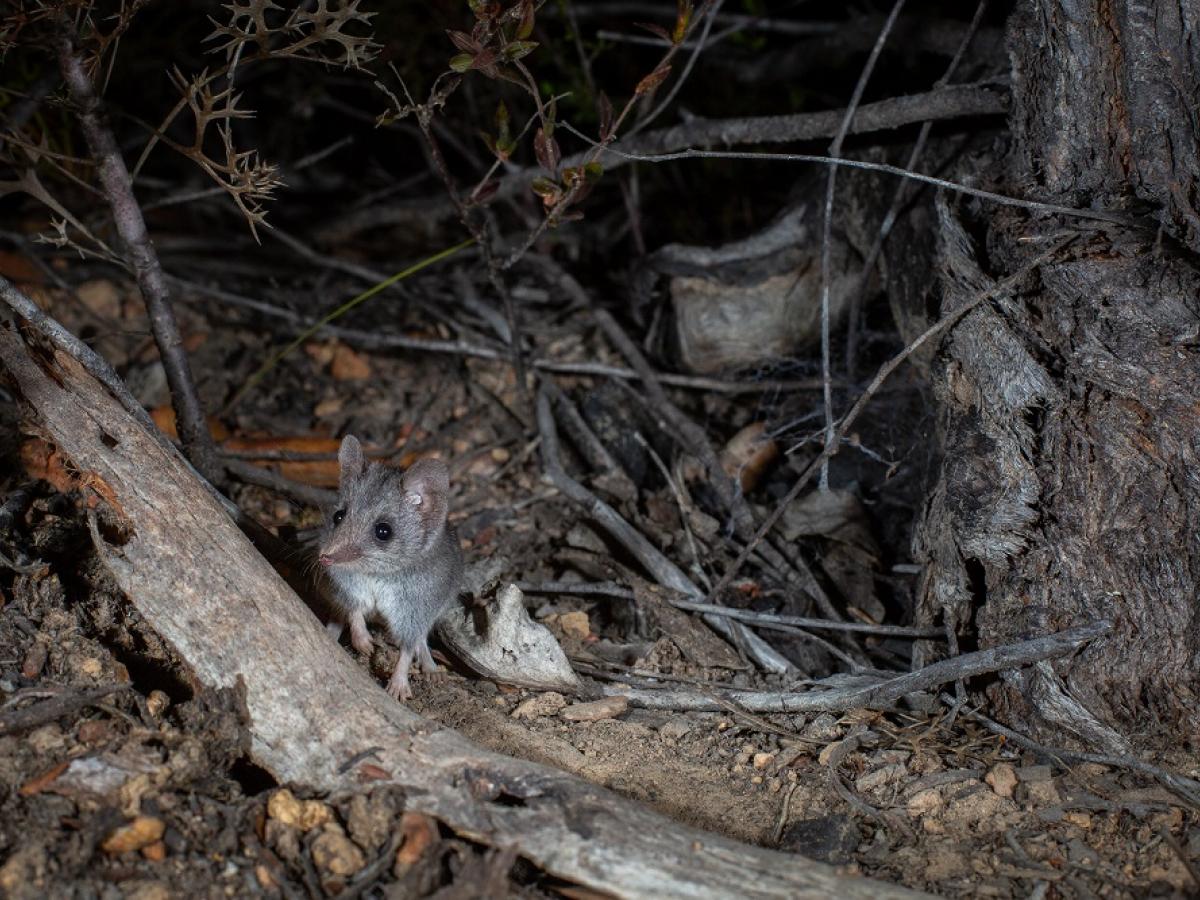Rare Kangaroo Island dunnart under threat from feral cats

The critically endangered Kangaroo Island dunnart. Photo: Brad Leue/Australian Wildlife Conservancy.
A study involving researchers from the University of Adelaide has found that feral cats are putting the critically endangered Kangaroo Island dunnart – a small, mouse-sized marsupial found only on Kangaroo Island – to the brink of extinction.
Less than 500 Kangaroo Island dunnarts were estimated on Kangaroo Island before the 2019-20 bushfires. More than 98 per cent of the dunnart’s habitat was severely burnt during these fires.
The researchers assessed the stomach contents and digestive tracts of 86 feral cats that were captured between February and August 2020.
The remains of eight individual Kangaroo Island dunnarts were found in the digestive systems of seven different cats. All cats were captured as part of the national feral cat control program and were euthanised in accordance with South Australia animal welfare laws.
Senior author, Louis Lignereux from the University of Adelaide’s School of Animal and Veterinary Sciences, said the study highlighted the urgent need to protect vulnerable species from feral cat predation, especially following natural disasters such as bushfires.
“These findings represent the first confirmation that feral cats do prey on Kangaroo Island dunnarts and suggest they are efficient hunters of this species given the small numbers of dunnarts that remain following the bushfires,” Dr Lignereux said.
“Bushfires concentrate predators and their prey in areas that are spared from the flames, so controlling the stray cat population in areas potentially inhabited by dunnarts was important.
“The combined pressures of a small, isolated population, natural disasters like bushfires, and introduced predators such as feral cats could lead to the extinction of this vulnerable species.”
"The combined pressures of a small, isolated population, natural disasters like bushfires, and introduced predators such as feral cats could lead to the extinction of this vulnerable species.”Dr Lignereux, School of Animal and Veterinary Sciences, The University of Adelaide

The critically endangered Kangaroo Island dunnart. Photo: Brad Leue/Australian Wildlife Conservancy.
First author Pat Hodgens of Terrain Ecology added: “I was genuinely shocked to see such a high proportion of feral cats from our study having recently killed Kangaroo Island dunnarts. This certainly validated all of the feral cat control work that we have undertaken with private landholders around known Kangaroo Island dunnart populations even before the fires.
“This study also shows the need for continued feral cat control around threatened species refugia on the West End of Kangaroo Island which is a national biodiversity hotspot.”
The Kangaroo Island dunnart is a small carnivorous marsupial between 80-90 millimetres in length that weighs between 10 and 25 grams. A Federal Government funded feral cat eradication program has been underway since 2015, with the aim to have Kangaroo Island free of feral cats by 2030.
Dr Lignereux said a 2020 study estimates there are between 1,000 and 2,300 feral cats on Kangaroo Island.
Australian Wildlife Conservancy played an important role in feral cat control and data collection for this research, and led the construction of a feral predator-free safe haven within the Western River Refuge to protect the Kangaroo Island dunnart.
Co-authors on the research are Associate Professor Ryan O’Handley (School of Animal and Veterinary Sciences, University of Adelaide), Heidi Groffen (Terrain Ecology, Kangaroo Island) and Associate Professor Ajai Vyas (School of Biological Sciences, Nanyang Technological University, Singapore).
The research has been published in Scientific Reports.
Media contacts:
Dr Louis Lignereux, School of Animal and Veterinary Sciences, The University of Adelaide. Mobile: +61 (0) 478 957 627, Email: louis.lignereux@adelaide.edu.au
Lee Gaskin, Senior Media and Communications Officer, The University of Adelaide. Mobile: +61 (0) 415 747 075, Email: lee.gaskin@adelaide.edu.au
